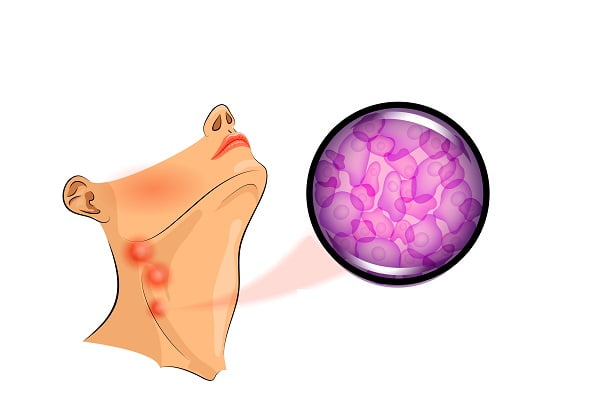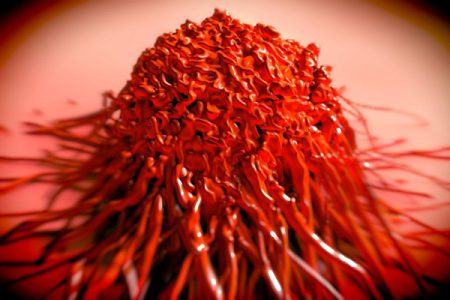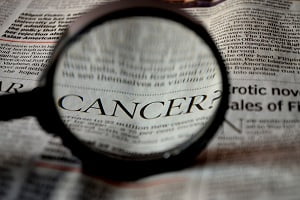Types of Lymphoma
- Updated on: Jun 10, 2024
- 5 min Read
- Published on Nov 15, 2019

Lymphoma
Lymphoma is a type of cancer which affects lymphocyte cells (type of WBC) of the lymphatic system. Lymphocytes help our body to fight against diseases and have an important role to play in the immune system.
Lymphoma cancer starts in the lymphocytes present in the bloodstream and from the blood it can spread or metastasize to other parts of the body.
Lymphoma cancer is not age-specific and therefore it can occur at any age, but it has been found as one of the most common causes of cancer in children and young adults between 15 to 24 years of age.
Types of lymphoma
There are two main types of lymphoma:
- Non-Hodgkin lymphoma (NHL)
- Hodgkin lymphoma
Non-hodgkin lymphoma (NHL)
Non-Hodgkin lymphomas begin due to an abnormality in a type of white blood cell (B-cell or T-cell), resulting in an uncontrolled division of these cells and therefore producing more and more abnormal cells which can spread to any other part of the body. Patients having weakened immune system due to some infections are at an increased risk of developing NHL.
Symptoms of Non-hodgkin lymphoma (NHL)
Common symptoms of non-hodgkin lymphoma are:
- Swollen lymph nodes especially in armpit, neck or groin
- Weight loss
- Night sweats
- Fever
- Trouble in breathing
- Chest pain
- Coughing
- Fatigue
- Pain and swelling in the abdomen with a feeling of fullness
Risk factors of non-hodgkin lymphoma (NHL)
Some common risk factors of non-hodgkin lymphoma include:
Age
Mostly lymphomas occur in people aged 60 years or above but some types of lymphomas are common in children and young adults.
Sex
Some types of lymphomas are more common in women while others are common in men.
Ethnicity and location
In the United States, African-Americans and Asian-Americans are usually at a lower risk of non-Hodgkin lymphoma as compared to white Americans. NHL is more common in developed nations.
Chemicals and radiation
Non-hodgkin lymphoma has been linked to nuclear radiations as well as some agricultural chemicals.
Immunodeficiency
Persons with a weak immune system due to HIV/AIDS, or immunosuppressant drugs taken after an organ transplant are at higher risk.
Autoimmune disease
Persons with autoimmune diseases (when the immune system attacks the body’s own cells) like rheumatoid arthritis and celiac disease are also at a higher risk.
Infection
Some viral and bacterial infections that transform lymphocytes increase the risk of NHL such as the Epstein-Barr virus (EBV).
Breast implants
Breast implants can cause anaplastic large cell lymphoma in the breast tissues.
Types of non-hodgkin lymphoma (NHL)
NHL types are categorized on the basis of types of cells affected, and growth of the affected cells. NHL is usually formed in B-cells or T-cells of the immune system. NHL can be of the following types:
B-cell lymphoma
This is a type of cancer that develops in B cells. B-cell lymphomas can be either slow-growing or fast-growing. Most of the B-cell lymphomas are non-Hodgkin lymphomas (NHL). Other B-cell non-Hodgkin lymphomas are Burkitt lymphoma, diffuse large B-cell lymphoma, chronic lymphocytic leukemia/small lymphocytic lymphoma (CLL/SLL), follicular lymphoma, and mantle cell lymphoma etc. Prognosis and treatment of the NHL depend on the type and stage of the cancer. The exact cause of B cell NHL is not known. These cancers develop when lymphocytes start growing in an uncontrolled manner. B cell lymphomas are the most common of all non-Hodgkin lymphomas and accounts about 85% of the NHL cases in the United States.
T-cell lymphoma
In T-cell lymphoma, T cells or T lymphocytes of lymphatic system become malignant. T-cell lymphoma may sometimes occupy the bone marrow but it usually comprises less than 25% of the marrow and if 25% or more of the bone marrow is inhabited by the malignant T cells, it is called as T-cell leukemia.
Burkitt’s lymphoma
Burkitt’s lymphoma is a very rare, aggressive type of NHL and is most commonly found in people with weak immune systems. This type of lymphoma is very common in children of sub-Saharan Africa and does not occur in any other part of the world.
Follicular lymphoma
This type of NHL usually starts in the white blood cells and is most common in old people. This type of NHL lymphoma is very slow-growing. Almost 1 in 5 NHL cases diagnosed in the United States is a follicular lymphoma type.
Mantle cell lymphoma
This is an aggressive and rare form of NHL and only 6 percent of NHL cases are usually of this type. Mantel cell lymphoma is commonly diagnosed at a very late stage. This type of NHL usually involves the gastrointestinal tract or bone marrow.
Primary mediastinal B cell lymphoma
This is a subtype of B-cell lymphoma and it primarily affects women at the age of 20 to 30.
Small lymphocytic lymphoma
Small lymphatic lymphoma (SLL) is a type of slowly growing lymphoma and the cancer cells of SLL are mostly found in the lymph nodes. SLL is similar to that of chronic lymphocytic leukemia (CLL) but in CLL, the majority of cancer cells are present in the blood and bone marrow.
Waldenstrom macroglobulinemia (lymphoplasmacytic lymphoma)
This is a rare type of cancer and accounts for only 1 to 2% of all lymphomas. It is mostly found in older adults and is a subtype of LPL. Here, abnormal antibodies are produced.
Hodgkin lymphoma
Hodgkin lymphoma is an uncommon cancer that usually develops in the lymphatic system. This type of lymphoma is characterized by an abnormal multiplication of B-lymphocytes and their accumulation in various parts of the lymphatic system, such as the lymph nodes. Therefore, the affected lymphocytes lose their properties of fighting against infections and thereby making the affected person more vulnerable to infections.
People with Hodgkin’s lymphoma have large number of cancerous cells called Reed-Sternberg (RS) cells which are absent in people with NHL.
Symptoms of Hodgkin lymphoma
- Night sweats
- Excessive weight loss
- High temperature
- Breathlessness
- Persistent cough
- Body itching
- Nose bleeding
- Blood spots under the skin.
- Heavy periods (menstruation)
Risk factors of Hodgkin lymphoma
Common risk factors of Hodgkin lymphoma include:
Infectious mononucleosis
Infection with EBV can cause mononucleosis and therefore increase the risk of lymphoma.
Age
Usually people between the age groups of 20 to 30 years and over the age of 55 years are at a higher risk.
Sex
This type of lymphoma is more commonly found in men.
Location
Hodgkin lymphoma is mostly found in the U.S., Canada, and northern Europe and very less in Asia.
Family
If a sibling has Hodgkin lymphoma, the risk is higher, and in fact very high if the sibling has an identical twin.
Affluence
High socioeconomic status people are at a very high risk.
Types of Hodgkin lymphoma
Hodgkin lymphoma has following types:
Lymphocyte-depleted Hodgkin’s disease
This is a rare, aggressive type of lymphoma that occurs in about 1 percent of lymphoma cases and is commonly diagnosed at the age of 30. In diagnostic tests, normal lymphocytes reveal an abundant number of Reed-Sternberg (RS) cells. Immunocompromised individuals such as HIV patients are mostly diagnosed with this type of lymphoma.
Lymphocyte-rich Hodgkin’s disease
This type of lymphoma is usually found in men and accounts for about 5% of all Hodgkin’s lymphoma cases. Lymphocyte-rich Hodgkin’s disease is usually diagnosed at early stages, and both lymphocytes and RS cells are revealed in diagnostic tests.
Mixed cellularity Hodgkin’s lymphoma
Both lymphocytes and RS cells are found in this type of lymphoma and it is a very common type of Hodgkin lymphoma. Almost a quarter of Hodgkin’s lymphoma cases belong to this type. It is usually more prevalent in older adult men.
Nodular lymphocyte-predominant Hodgkin’s disease
This type of Hodgkin’s lymphoma occurs in almost 5% of lymphoma patients and is characterized by an absence of RS cells. It is more common in males. NLPHL is commonly found in people between the ages of 30 and 50.
Nodular sclerosis Hodgkin’s lymphoma
This is a common type of lymphoma and usually occurs in 70% of Hodgkin’s cases. It is commonly found in adults compared to any other age group. This type of lymphoma occurs in lymph nodes containing a scar tissue.











